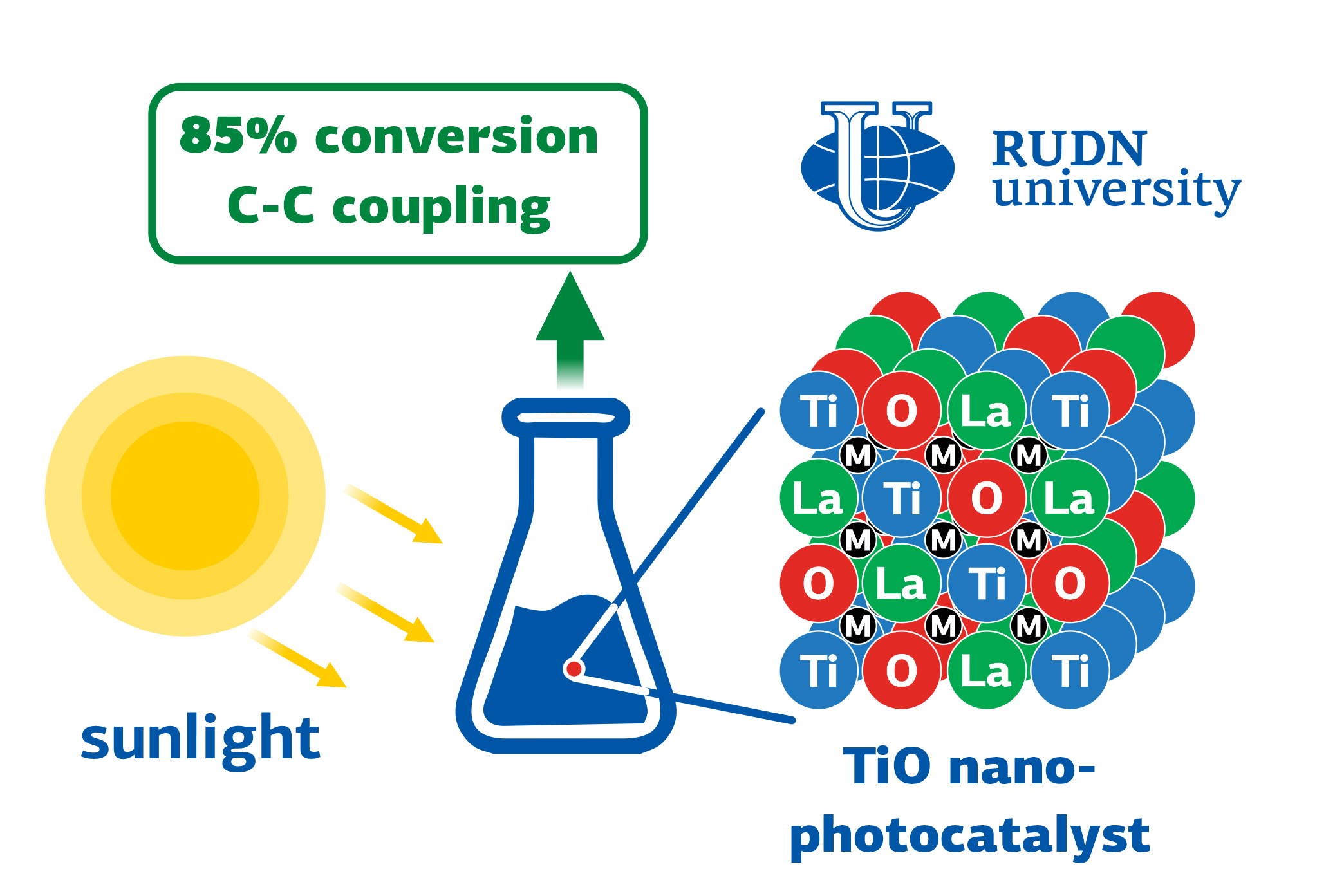Combination reactions are used to create complex molecular structures, when two carbon atoms from different hydrocarbons are combined. This is how, for example, they obtain for example dibenzyl or diphenylethane, a two-headed hydrocarbon with two benzene rings. Dibenzyl derivatives have a wide biological spectrum. Its most famous derivative is the insect repellent DDT. The coupling reaction requires precious metal catalysts and harsh reaction conditions. A greener alternative is photocatalysts. They work under the influence of sunlight and under mild conditions. RUDN University chemists with colleagues from Iran have created such photocatalysts based on titanium oxide nanoparticles.
“Coupling reactions are one of the most useful approaches to the synthesis of supermolecules. Therefore, the search for highly efficient catalysts for the formation of carbon-carbon bonds remains a very complex and important task in synthetic organic chemistry. The synthesis of dibenzyl compounds attracts attention due to the variety of their properties – they have antitumor, antidiabetic and anti-inflammatory activity. However, such synthesis requires noble metals or complex catalysts, harsh reaction conditions, and organic solvents,” said Yahya Absalan, PhD, RUDN University researcher.
RUDN University chemists have created 12 photocatalysts. All of them are built from titanium oxide nanoparticles and an additional metal – an element from the lanthanide group or transition metals. The addition of lanthanides—group III elements of the 6th period of the periodic table—increases the surface activity of nanoparticles. As a result, the efficiency of the catalyst increases. 86% of the initial reagents successfully react. For comparison, nanoparticles without additional lanthanides can achieve only 80% efficiency.
The new nanocatalysts also reduce the energy threshold for two carbon atoms to bond with each other. This value is determined by the so-called band gap. That gap together with surface activity are the key factors that determined the effectiveness of photocatalysts.
“We have synthesized 12 new nanocatalysts. Among them, there are binuclear and trinuclear titanium oxides with high surface activity and low energy band gap. We established the decisive role of these two parameters with the help of a photocatalytic test, having considered for the first time the synthesis of dibenzyl in sunlight,” said Olga Kovalchukova, Doctor of Chemistry, Professor of the Department of General Chemistry, RUDN University.


